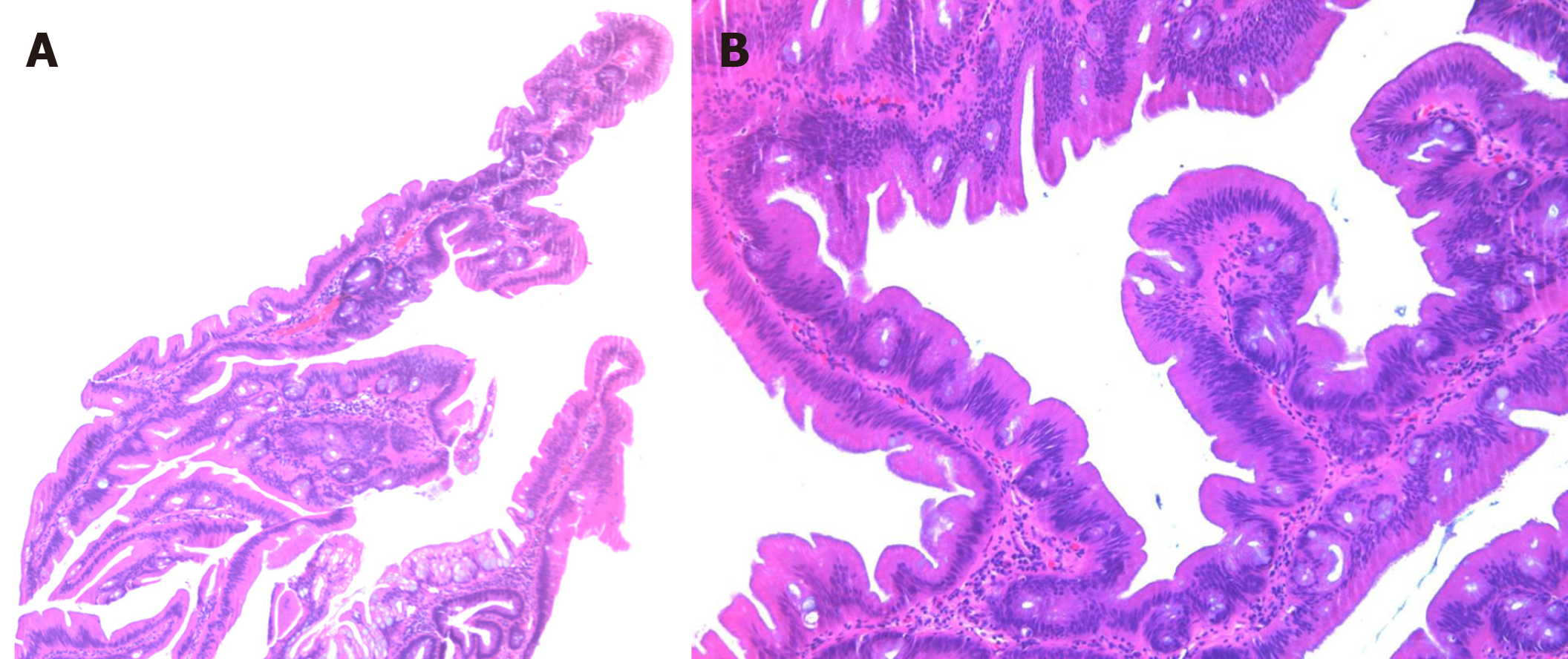Copyright
©The Author(s) 2020.
World J Gastrointest Pathophysiol. Jun 20, 2020; 11(4): 78-83
Published online Jun 20, 2020. doi: 10.4291/wjgp.v11.i4.78
Published online Jun 20, 2020. doi: 10.4291/wjgp.v11.i4.78
Figure 1 Low and high power view of the traditional serrated adenoma.
A: A low power view (40×) of the traditional serrated adenoma shows viliform growth of the polyp with slit-like serration; B: A high power view (100×) demonstrates ectopic crypt formation, eosinophilic cytoplasm and pencillate nuclei.
Figure 2 Histologic changes of traditional serrated adenoma parallel molecular alterations.
During traditional serrated adenoma (TSA) development, mutations in BRAF (BRAFmut), KRAS and EGFR cause typical cytomorphology and serration in precursor lesions. Accumulation of molecular alterations such as aberrant WNT signaling leads to fully developed TSA. Other pathways (Bone morphogenetic protein?) in addition to WNT signaling might also be involved in this step. Finally, mutations such as TP53 will cause the progression of TSA into high-grade dysplasia and malignant transformation.
- Citation: Gui H, Husson MA, Mannan R. Correlations of morphology and molecular alterations in traditional serrated adenoma. World J Gastrointest Pathophysiol 2020; 11(4): 78-83
- URL: https://www.wjgnet.com/2150-5330/full/v11/i4/78.htm
- DOI: https://dx.doi.org/10.4291/wjgp.v11.i4.78










